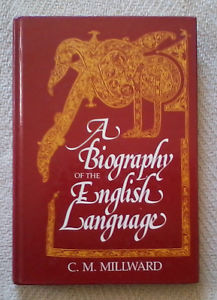
Who:Read this if you are a writer who likes to know what’s built into the words you’re using, what they say about their circumstances as well as what resonances they add for the knowledgeable. Read it if you love the minutiae of language, all the little “who would have thought” and “Although unlikely” facts that get seeded into long and drifty conversations, like the fact that Indo-European had three numbers: singular, plural, and dual.
Why: Read this so you can use words both more efficiently and more artfully. SO you know how the literary tradition you are working for and against, bound inextricably within, has been affected by linguistic change and created its own pressures to change in turn.
When: Read this when going among bores, for it will arm you with facts with which any recitation of X-Files plots or sports trivia can be met. Read this when you want something a little academic, with that cleansing flavor of self-improvement that the scrub of dry details can bring. Read it when you’re cramming for a test that involves volcabulary.
Where and how: Read this sporadically, tucking facts away, or with a notebook in hand. Read it for a class that takes you through centuries of linguistic change, showing you how history is tucked into every Vocabulary lesson.
#sfwapro








6 Responses
Pity its so bloody expensive
I know. Book prices are unfathomable to me, particularly when it’s an older book list this. I recommended a book to someone the other day and he found it on Amazon, but used since it was out of print, for $163, which he was understandably reluctant to pay.
I know. Book prices flummox me, particularly when it’s a book that’s been in print for a long time. I recommended a favorite SF book to someone the other day and when we investigated, found it on Amazon but out of print — for 160 bucks! Yikes.
On a similar tho somewhat different theme, may I also recommend “The Lexicographer’s Dilemma,” which is a history of the efforts to standardize English.
I read that and really enjoyed it. Someone on Twitter suggested I would also like The Stories of English by David Crystal.